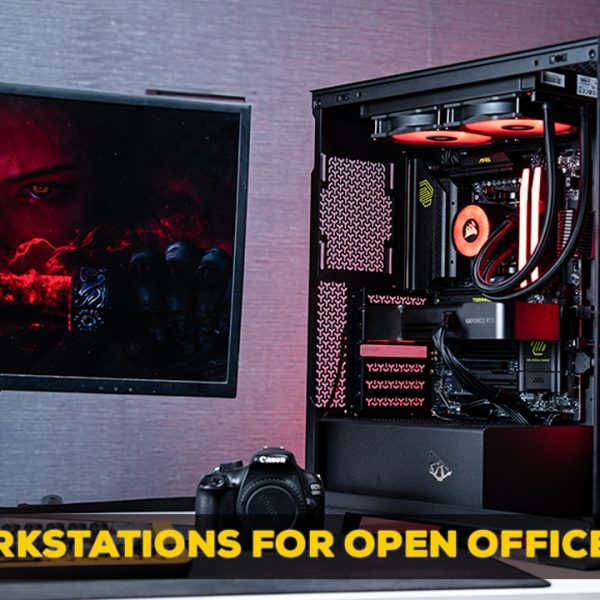Introduction
Centuries ago, paintings were restored with painstaking care, layer by layer. Today, a new kind of art demands restoration: cinema! India has a rich history of filmmaking, and some of our best films are either lost to time or in dire need of restoration. Unlike paintings, however, restoring film requires processing an immense amount of data, raw processing power, and lightning-fast access across a secure, intelligent network.
This new era of restoration called for an infrastructure capable of keeping up with the art it supports, and Prasad Group contacted us at The MVP to deliver just that.
The Client
Prasad Studios, part of the Prasad Group, is one of India’s leading post-production and digital restoration houses, with facilities across India and internationally. They are widely respected for their work in DI (Digital Intermediate), scanning, digital restoration, and mastering. In addition to restoring their own archives, Prasad Studios also provides digital restoration and preservation services to Hollywood studios, national archives, OTT platforms, and global broadcasters, having restored over 4,000 international projects, including more than 600 Hollywood titles.
One of their recent flagship efforts includes the Raj Kapoor Restoration Project, where Prasad Studios undertook the meticulous 4K restoration of iconic films like Awaara, Shree 420, Bobby, and Sangam. This initiative, in collaboration with RK Films and the National Film Archive of India, underscores their commitment to preserving Indian cinema’s most celebrated legacies.
The Challenge
The existing setup was insufficient for modern post-production workflows, particularly for high-resolution media handling. The core issues included:
- Restricted Access: Due to strict content protect protocols, workstations could not store film content locally. High-performance network access was essential.
- Network Bottlenecks: Existing systems were limited to 10-25 Gbps, insufficient for streaming and editing uncompressed 4l/8k footage.
- Storage Limitations: Inadequate Input/Output Operations Per Second (IOPS), throughput, and fault tolerance.
- Workflow Fragmentation: Restoration, grading, and review tasks were isolated and slow due to uncoordinated data handling.
- Multi-Client Load: Infrastructure needed to support both in-house and external client projects, simultaneously.
The MVP Solution Workstation Deployment
We supplied and configured 160 high-performance workstations, each assembled in-house with meticulous attention to hardware balancing, thermal optimisation, and cable management. Every unit was stress-tested under realistic workloads, imaged with essential post-production software, and benchmarked before deployment, each tailored to support different stages of the film restoration pipeline. Before the full-scale rollout, we also provided a batch of test systems to Prasad Studios. This allowed them to work closely with their software vendors to validate tool compatibility, assess workflow demands, and finalise the ideal hardware configurations for different roles.
These systems were categorised into three performance tiers:
Tier 1: Ultra-Performance Systems
Designed for demanding workflows such as color grading, AI-based restoration, and VFX, these machines featured multi-core processors, high RAM capacity (up to 128GB), and Gen 4 NVMe SSDs for rapid data access. They were equipped with enterprise-grade GPUs capable of handling 4K+ timelines and real-time rendering, and were connected via 45 Gbps fiber NICs to maintain uninterrupted access to NAS storage.
Tier 2: Power Workstations
Used primarily for editing, batch rendering, and conforming, these systems struck a balance between speed and efficiency. Configurations typically included 64GB RAM, fast SSDs, and mid- to high-end GPUs, well-suited for non-linear editing and automation tasks. Network connectivity ensured consistent access to shared storage with minimal latency.
Tier 3: Verification & Ingest Stations
These systems focused on file intake, QC, and final verification. While less resource-intensive, they were optimised for stability and speed with reliable CPUs, SSD storage, and 25/40 Gbps network connections, ensuring rapid file transfer and accurate output review.
All systems were shipped with 32-inch monitors, calibrated peripherals, and fiber-ready NICs to fit seamlessly into the upgraded network and storage architecture.
Storage Architecture
We deployed a tiered NAS infrastructure, balancing performance and redundancy:
| Storage Role | Capacity | Throughput | RAID | Drives Used | Purpose |
| High-Speed Active NAS | 32TB/90TB | Up to 24GB/s | RAID 10 | NVMe + Enterprise HDD | Live editing, AI workflows |
| Verification NAS | 32TB | ~4GB/s | RAID 1 | Mirrored SSDs | FQA, ingest, secure I/O |
| Long-Term Archive NAS | 600TB | ~10GB/s | RAID 6 | High-capacity SATA HDDs + Parity | Long-term storage, delivery |
Network Infrastructure
The demands of 4K and 8K uncompressed video workflows required a network that could deliver both speed and stability at scale. We engineered a high-availability, low-latency architecture with enough headroom to support simultaneous users accessing and processing terabytes of footage in real-time.
To support non-blocking, high-throughput access, we built a fiber-optic network backbone:
- Core: 100 Gbps fiber switches (SFP28/QSFP28 modules)
- Access: 25/40 Gbps edge switches per cluster (4x 100G uplinks)
- NICs: 45 Gbps fiber NICs installed across all workstations
- Media: All links run on multimode OM4/OM5 fiber cables
- Latency: Sub-millisecond transfer times across nodes
The network was structured in five independent clusters, each with its own dedicated NAS, workstations, and uplinks.
Deployment Mapping
With over 160 systems tailored across restoration, processing, and quality assurance roles, we implemented a precise deployment strategy. Each workstation tier was assigned based on function, bandwidth needs, and storage access patterns to ensure efficient distribution and minimal latency within and across network clusters
| Workstation Role | Count | Location |
| Operator Workstations | ~50 | Cluster NAS + Editing Bays |
| Render/Process Nodes | ~70 | Process Rooms + Server Racks |
| Ingest/FQA/Review | ~40 | Dedicated I/O + FQA Sections |
Each role was mapped to specific network zones and NAS volumes for access control, ensuring security and performance.
The Result
The upgraded infrastructure delivered measurable performance gains and operational efficiency. With fibre-based networking, real-time access to shared high-speed NAS, and tiered workstation deployment, Prasad Studios now supports parallel workflows at scale, across departments and clients. Restoration processes that previously faced bottlenecks due to limited I/O or isolated storage are now streamlined into a unified, secure, and scalable environment.TheMVP Advantage
The project reflects The MVP’s approach to solving complex technical challenges through thoughtful planning and precise execution. From network architecture to storage and workstation rollout, every component was aligned with the client’s workflow needs. The result is a stable, high-performing infrastructure that supports the evolving demands of large-scale film restoration, both today and in the years ahead.
Work With Us
We’ve spent the last decade building and shipping custom workstations across the country, and have scaled from a small one room outfit to now operating out of four major cities. From scaling technical operations to being a part of the next big chapter of a creative studio, we can help engineer the systems that power your work.
Talk to our experts today for The MVP Advantage.





